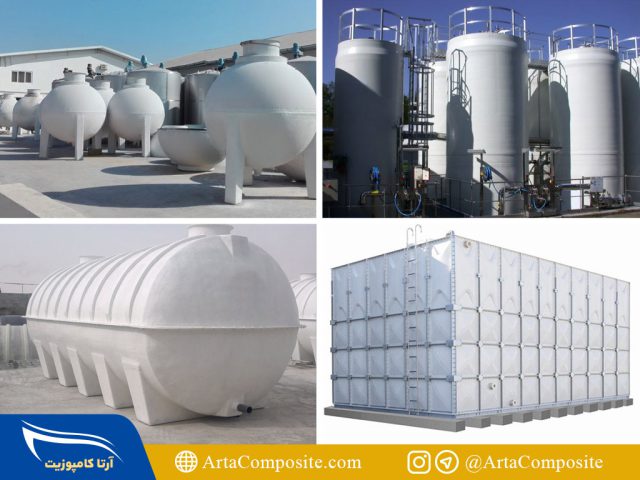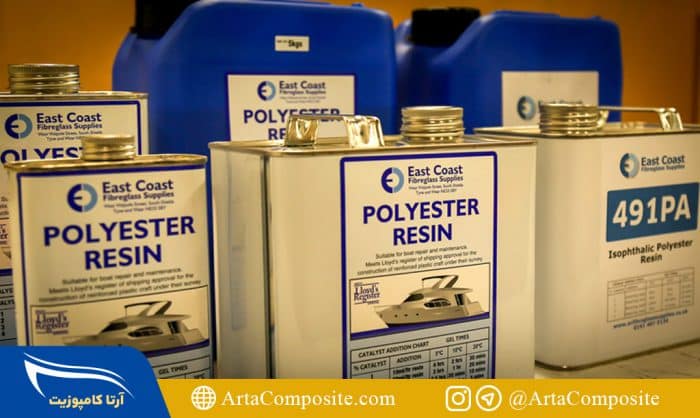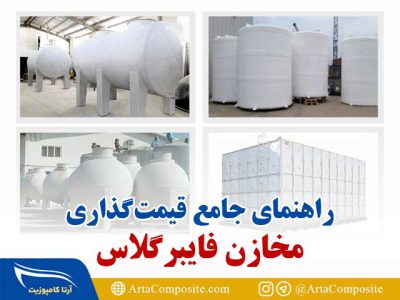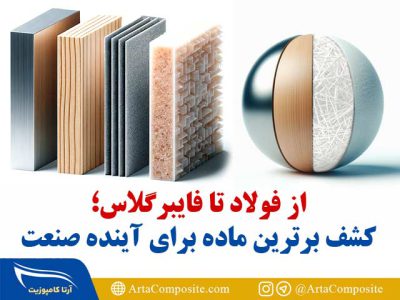Fiberglass tanks (introduction, features and benefits)

fiberglass tank
Fiberglass tanks are an ideal solution for storing all kinds of liquids such as water, chemicals, etc., which are widely used in different industries. .
Some applications of this tank fiberglass are: Tanks Oil fields, liquid fertilizer, water treatment , harvesting rainwater, storing irrigation water and dozens of other cases.
Artacomposite production tanks for different industries have various capacities and cover the storage capacity of 1,000 liters to 1,000,000 liters.
Fiberglass tanks are more economical compared to other types of tanks, they have high flexibility in production and can be adjusted according to your project, and most importantly, they are durable and strong.
Why should you use Use a fiberglass tank?
Some of the most important features of fiberglass tanks are:
- High resistance to corrosion
- High tensile strength and flexibility
- Easily formulated and designed to customize the tank for different uses, products and temperatures
- Ease of repair and reconfiguration
- Durable, affordable and economical
Advantages of fiberglass tanks
- long life
- Compared to the weight, 12 times stronger than steel
- High strength to bear heavy weights
- Ease of transportation and loading
- Structural design
- Lower cost for large to medium volumes
- Corrosion resistant
- Flexibility for customization
- UV resistant
- Resistant to exposure to environmental effects
- Possibility of changes in tank compositions for above ground or underground use
Not all fiberglass is created equal
Breakdowns and problems occur when fiberglass tanks are not made according to the conditions and needs of the project, or when standard quality procedures are not followed in the manufacturing process.
Most of the applicants for fiberglass tanks in different industries, because they are not familiar enough with the details and subtleties of the fiberglass industry, so it is sometimes seen that they do not specify the specifications and details of their project correctly, and after the project is completed, the produced tanks do not meet their needs. Most of these problems occur due to different degrees of resin and glass and their combinations for different projects.
"Arta Composite" experts are by your side to get the specifications and details of tank projects with their expert advice and to tailor production tanks Produce according to your conditions and needs.

Classes and characteristics of polyester resin
Orthophthalic Resin: For general purposes
Commonly referred to as a general purpose resin, orthophthalic provides basic consistency properties, but its corrosion resistance and weathering stability are moderate. Most fiberglass tank manufacturers make their standard tank using orthophthalic resin systems.
Isophthalic resin: advanced chemical resistance, resistance and durability against stretching, corrosion and wear.
Isophthalic resin is used when a higher degree of corrosion resistance is required. Isophthalic resins have increased chemical resistance, tensile strength, durability and wear resistance. Due to these characteristics, large and advanced companies in the world generally use the isophthalic resin system in the design of their standard fiberglass tanks to provide their customers with a durable, high-quality, and long-lasting tank.
Vinyl Ester Resin Systems: The highest quality and resistance to chemicals and heat, which are used in special industrial uses.
Vinyl ester resin provides the highest quality of chemical resistance. Vinyl ester resins eliminate almost all vapor and moisture transfer, which is an excellent agent for containing corrosive liquids. Vinyl ester resin also provides excellent heat resistance along with corrosion resistance. Vinyl ester resins are hydrolytically stable, which increase performance in chemical resistance, tensile strength, corrosion and adhesive properties.
"Arta Composite" strengthens and improves all welds, connections and flanges of fiberglass tanks using Vinyl Ester resin.




